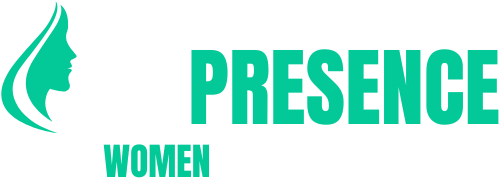Various factors are contributing to the growth in women’s health solutions across APAC and the Middle East, including cultural influences, increasing disposable incomes, and greater gender equality. A significant trend is the rising number of women seeking holistic health options.
Cultural Influences on Health Choices
Cultural traditions, such as the longstanding practices of herbal medicine in China and India, play a crucial role in shaping women’s healthcare decisions.
According to Euromonitor’s Health and Nutrition Survey conducted in early 2024, over 20% of women in APAC utilize natural remedies for issues such as menstrual discomfort, gynaecological health, and reproductive wellness, contrasting with 13–19% worldwide.
Yang Hu, Insights Manager for Health and Beauty in Asia at Euromonitor, remarked, “In nearly all Asian nations, herbal and traditional ingredients are crucial for women’s health.”
Traditional Chinese Medicine (TCM) associates menstrual pain with liver Qi stagnation and cold accumulation, treating these conditions with herbs such as ginger, safflower, and motherwort. In India, Ayurvedic solutions like turmeric and fenugreek are favored for alleviating muscle spasms and abdominal pain.
Yang also suggested that brands in APAC should consider expanding their menstrual care and health management offerings by incorporating local traditional remedies, enhancing consumer education, and developing convenient product formats.
In the Middle East, a growing awareness of preventive wellness is fueling demand for time-honored herbal medicines. Black seed oil, for instance, is celebrated for its wide-ranging health benefits, while honey and bee propolis are acknowledged for their antibacterial, antifungal, and antiviral properties.
These traditional remedies are gaining popularity among women of all ages, focusing on pivotal aspects like general health, sexual well-being, and gynaecological care. Issues related to reproductive health and oncology are particularly significant for women aged 25 to 50 and beyond, according to Amna Abbas, Senior Consultant at Euromonitor.
Such health concerns are also contributing to the increasing demand for vitamins and supplements.
Vitamins and Supplements: A Growing Necessity
Euromonitor’s survey indicates that 34% of women globally turn to vitamins to alleviate menopause-related symptoms, with the APAC region leading in demand for bone and skin health products.
According to the Euromonitor Consumer Health 2025 Edition, women’s health and beauty products accounted for 2.5% of total dietary supplement sales in the region in 2024, with women’s health supplements outpacing growth in other categories across APAC.
The global vitamins and supplements market is estimated to reach US$140 billion in 2024, driven by an aging population and an increasing interest in proactive healthcare in APAC, as noted by Karolina Grigorijevaite, Innovation Team Lead at Euromonitor International.
“Our survey revealed that 61% of consumers in APAC view vitamins and supplements as essential for their health in 2024,” Grigorijevaite highlighted.
These findings align with Statista’s data, which estimated the health supplements market in APAC at over US$140 billion in 2024 and projected it to exceed US$200 billion by 2027.
In addition, the market for women’s health and beauty supplements in the Middle East and Africa is expected to reach US$1.32 billion by 2028, growing at a CAGR of 5.9% from 2022 to 2028, according to Grand View Research.
Abbas noted, “The demand for women’s health supplements is on the rise in the Middle East, particularly for products that support menstrual health, pregnancy, and menopause, along with a growing interest in issues like PCOS and sexual wellness.”
Maria Mascaraque, Head of Food and Nutrition at Euromonitor International, pointed out that the growing focus on personalized care and self-care is fostering expansion in women’s health sectors, opening new avenues for businesses.
She indicated that breaking societal taboos surrounding menstrual and menopausal health is intensifying consumer demand. While women have long turned to supplements for specific health benefits, there is a burgeoning awareness of the promise offered by natural and functional foods.
Mascaraque emphasized the importance of adopting a holistic approach to women’s health that extends beyond reproductive age, concentrating on interconnected needs like bone health, digestion, hormonal balance, skin and hair care, and weight management. Such an approach presents opportunities to incorporate beneficial ingredients into daily diets and enhance women’s overall well-being.
She pointed to APAC as a leader in functional foods for women, referencing the Chinese dairy giant Yili as an example. “They provide milk powders tailored to adult women, including options rich in iron and calcium, low-fat varieties with probiotics, and products featuring red ginseng extract for beauty and energy enhancement,” Mascaraque stated.
As women increasingly pursue personalized and holistic health solutions, technology is playing an essential role in how they manage their wellness.
Harnessing Technology for Enhanced Wellness
With high internet usage rates in countries like the UAE and Saudi Arabia, health-tracking apps and devices are gaining traction.
“Consumers are already utilizing health-tracking apps on their smartphones and smartwatches. We anticipate a significant rise in the usage of these apps for regular exercise tracking and self-care, especially among Zillennials—those who identify as both Gen Z and Millennials—who see health as a long-term investment,” stated Abbas.
In APAC, members of these generations are leveraging technology to monitor their health, participate in fitness activities, and make informed dietary decisions. The affordability of smartphones and widespread internet access helps make these trends increasingly accessible.
A notable example in APAC is the Pokémon Sleep app, which merges sleep tracking with gaming elements to reward users who maintain healthy sleep patterns. Yang remarked, “Apps like these have shown to be remarkably effective in engaging and retaining users.”


